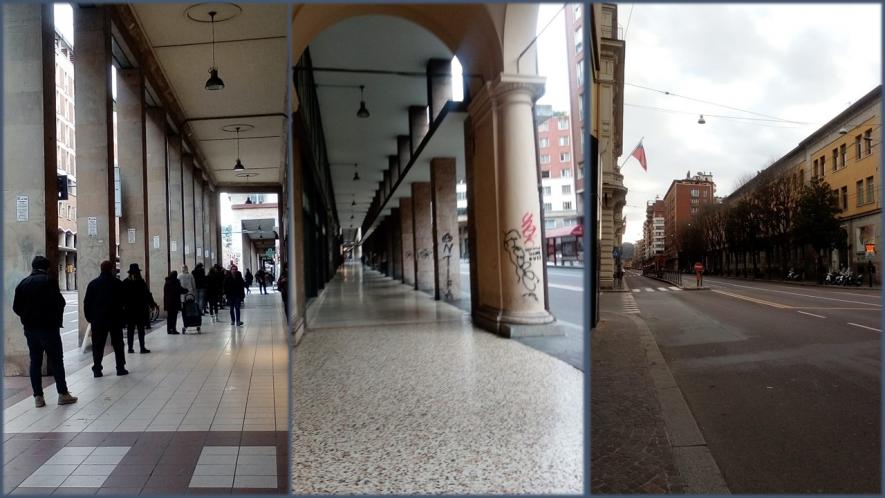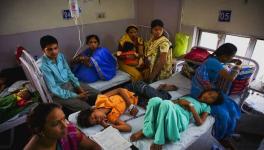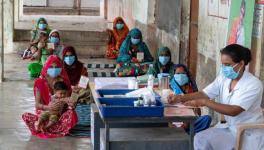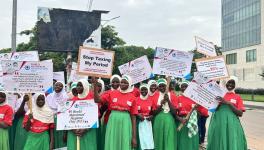Reflections from Italy Under Lockdown

As a research scholar working in the oldest continuously functional university in the world, University of Bologna, and as an admirer of antiquities, there is much history in the city of Bologna to revel in: the beautiful medieval streets and the arched porticoes which cover the pavements of the city centre; one of the oldest anatomical theatres in the world from the 16th century, or for that matter a botanical garden, ‘Orto Botanico’, which is a part of the university museum system, also from the same century. Having lived here for the better part of the last decade, I now call this city my second home.
However, little did I know I would also be privy to an era-defining event in my time as a resident. I am, of course, speaking of the Covid-19 outbreak in Northern Italy, which has resulted in the lockdown of the entire country since March 9. The lockdown entails complete self-isolation for citizens and residents of the country. We can still go out to buy groceries and medicine for which we should fill up a self-certification form in case there are police controls. In some essential jobs which cannot be performed online, workers can move to their place of work, but they also must fill up the same self-certification.
Bologna is the capital of the region of Emilia-Romagna, which as of March 16, is the second most affected region in the country, both in terms of number of people who have tested positive for the disease (3,522) as well as the number of deaths (346). The national numbers are even more staggering: almost 28,000 positive cases and 2158 casualties.
A colleague working in the university hospital pointed out that a wave of fresh cases is likely in the region in the next couple of days and that the absolute numbers will rise in the near future before they subside. With large numbers of people getting infected and many requiring medical care, the healthcare sector is working non-stop, and stretching both its material and human resources. Reports have also started appearing in local news outlets that many healthcare workers are infected themselves. Increasingly, medical practitioners in Italy agree that the steps for containment arrived a bit late.
Italian Prime Minister Giuseppe Conte, in his address to the nation on March 11, said that the effects of the lockdown would be visible only after a couple of weeks. Described as the most severe set of restrictions on civil liberties since the Second World War, we must now stay home and avoid all non-essential contact with the outside world in a bid to contain the virus at the earliest. The wait could be long but it has to be done, at any cost.
***
It all started a little over three weeks ago, around February 21, with the two northern regions of Lombardia (capital: Milan) and Veneto (capital: Venice) identified as places where the first cluster of infections appeared. Smaller districts in these regions, about 11 of them, were cordoned off, affecting the movement of about 50,000 people. The total number of infections that weekend (of February 22 and 23) was still below 200 with three deaths. Our region, just south of Lombardia and Veneto, also took precautionary measures and shut down schools and universities till March 1. Things certainly did not seem dire enough back then; and bars, restaurants, local businesses were all open.
Before February 21, discussions around Covid-19 on national television were focusing on measures that the Italian state had taken to restrict the entry of Chinese nationals into the country. Italy was the first EU nation to stop all direct flights to and from China. However, criticism emerged that not enough was being done as connecting flights were not being monitored. A penchant for racist remarks could also be discerned with the occasional discussant espousing controversial theories of Covid-19 being a product of the laboratory.
After February 21, the country has seen an exponential rise in the number of cases and with that, new Prime Ministerial Decrees - each increasingly more restrictive - to control the damage caused by this invisible enemy. A situation so unprecedented has also brought forth many issues of the society and the nation in relation to the world.
Democracy, information and transparency: The East versus West conundrum
In the initial days of the outbreak, La Repubblica, a Centre-Left national newspaper, was updating the number of cases (both infections and deaths) nationally multiple times daily on its website; and this information was readily available as the top headline on the homepage. By the end of that week, as the numbers kept increasing, that data was available only after a more careful perusal of the homepage articles.
An increased stress on transparency was also observed with politicians and lawmakers noting that they have been forthcoming with their own tests (making their own positive status public) and that Italy is handling the outbreak with a lot of openness. Experts highlighted that there are many more cases in Italy because of more testing than in other countries in Europe.
In the first week of the contagion, there was a lot of effort (as reported also in the media) to show that Italian businesses would not stop and that tourists were welcome. Museums in the most affected regions reopened quickly. Nicola Zingaretti, a politician from Rome and Secretary of the centre-left Partito Democratico, was seen sharing a drink with youngsters in Milan. (In a few days, he revealed to the public that he had tested positive.) Hashtags like #milanononsiferma (Milan will not stop) gained currency. The Prime Minister voiced his displeasure at instances of countries blocking Italians abroad. Discussions on whether to close the borders between EU countries were seen as radical.
A colleague, who is a sociologist affiliated to the Political and Social Sciences department of the university, noted that initially, there was some controversy over the government taking drastic measures, with critics terming them undemocratic. The argument was that Italy could not apply the same measures as China because of cultural, political and economic differences, and that most probably, they were not even necessary.
However, with the passage of time, the Chinese model has become the one to be followed. China’s apparently extreme, ‘undemocratic’ measures of social isolation have worked with negligible fresh new cases being reported from the country. Italy has adopted many such measures as containment seems the most effective way to stop the spread of this virus, about which there are more unknowns than knowns at this point in time.
Whose life matters: A veritable generational battle
If in the initial days, the trending hashtag was #milanononsiferma, by March 8, it was #iorestoacasa (I will stay home). The extension of the ‘zone rosse’ (‘red zones’) from Lombardia and large parts of Emilia-Romagna to the whole of the country called for a genuine change in the lifestyle of Italians, especially young people, for at least the next month. World Bank data from 2019 shows that about 23% of the Italian population is over the age of 65 (in comparison, the figure in India is about 6%).
Italy has the second oldest population in the world after Japan. So the new decrees called for drastic reconfiguration of socialising habits of the able-bodied to ensure that its most vulnerable - the oldest sections of the population who are most likely to be adversely affected - would be protected.
In fact, after severe restrictions were passed by the government on March 7, which led to a huge flux of young people from the northern regions to the south, the President of the southern region of Puglia, Michele Emiliano, made an impassioned request to those coming from the north to remain there, as they were risking the lives of their parents and grandparents. Emiliano’s request also must be understood in light of the differential development between northern and southern Italy.
The North-South question
Like in India, Italy too has marked differences in developmental indices between the North and South. In Italy, it is the North which is highly developed. The two most affected regions, Lombardia and Emilia-Romagna, are among the wealthiest regions in Europe with excellent public healthcare.
The Southern regions lack such sophisticated infrastructure. As reported by La Stampa, a centrist daily, on March 9, Iole Santelli, President of another Southern region of Calabria asked the people of her region living in the North to refrain from returning home as the local health infrastructure would not be able to manage an exponential growth of infections. Another opinion piece, carried on the same homepage, exhorted the Northerners to not be irresponsible and bring the disease with them to the South.
This is an interesting turn of events in a country, where politicians from the wealthy North, especially those from the Right-wing Lega (which until a few years back was called Lega Nord or the Northern League), have derided the poorer South, and some of their most radical followers have even called for the North to separate from the South. Increasingly, over the last few weeks, as my sociologist colleague pointed out, the Lega has been quite silent. Bitter polemics, characteristic of Italian politics, have given way to fear and also to resilience. As the Prime Minister noted, these are indeed some of the darkest hours in the history of the country but then, it will manage to turn things around.
Italy is under an unprecedented lockdown till April 2. People have been asked to quarantine themselves in their own houses to avoid the further spread of the virus. Interestingly, the English word ‘quarantine’ comes from the Italian ‘quarantina giorni’, which means 40 days. The present usage goes back to the 17th century implying forced isolation of ships suspected to carry a disease to stop the spread of infection. In a way, the initial 11 districts under lockdown will be serving a literal quarantine as they would be shut down from February 24 till April 3.
We can all hope now that the positive trends from China, where a complete lockdown has been effective in arresting the spread of the virus, will start reflecting in Italy too. Until then, we have people, both young and old, singing from their balconies and windows across the country, letting everyone know that there is still thriving life all around. Just that they must temporarily stay home.
Anwesha Chakraborty is a post-doctoral fellow at the University of Bologna whose research interests include public communication of science; national science policies; and, digitalisation and society. The views are personal.
Get the latest reports & analysis with people's perspective on Protests, movements & deep analytical videos, discussions of the current affairs in your Telegram app. Subscribe to NewsClick's Telegram channel & get Real-Time updates on stories, as they get published on our website.
























